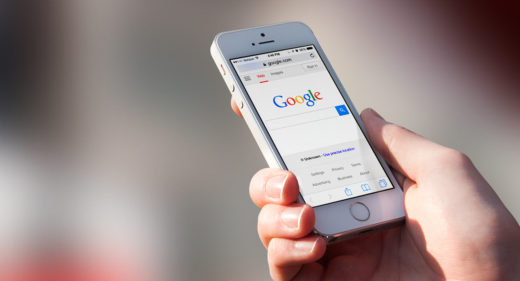Key Things to Remember:
- Google displays more local pack results than Yahoo or Bing
- Google is most confident in the quality of it’s local data set to keep local businesses from being squeezed out of organic positions by large websites
- Google gives fewer Page 1 positions to ‘Leisure’ businesses than Yahoo or Bing
- Search terms with a ‘Geo-modifier’ return many more local results
Last year Bright Local conducted research on which of the three main Search Engines gave the most space on their 1st page of results to local businesses; Google, Bing or Yahoo (see post). Now, 16 months later, they revisited the question and refreshed the results in an all new ‘Local SERPs showdown for 2015′.
3 Important questions to answer
In conducting & publishing this research, they wanted to answer these 3 questions:
- Which Search Engine gives more 1st page space to local businesses?
- How does the split of search results vary by keyword type?
- How does the split of search results vary for geo-modified vs non-geo modified keywords?
Last month when Google announced an algorithm change that penalized non-mobile websites, it was dubbed “Mobilegeddon,” and everyone was scrambling to ensure their sites were mobile-friendly in order to perform well in mobile search.
In the time since that update, mixed reports have emerged about the impacts this algorithm has had on mobile website traffic. Because a sudden impact wasn’t noticed, many have assumed that they don’t need to worry yet about compliance with the mobile-friendly mandate Google set. In reality, “Mobilegeddon” is just one example that illustrates how much mobile has changed consumer behavior and Internet search behavior. In fact, the search engine Bing recently announced intentions to implement its own mobile-friendly algorithm.
Here are three reasons why local businesses should consider a mobile website a critical part of doing business.
SEO can be a bit of a beast. Everyone has their own methods and strategies and advice to give out to anyone who will listen. If you’re like me, you like visually appealing info-graphics that can print nicely and be hung on the wall for reference. The folks at Search Engine Land with Column Five Media have provided a very handy graphic and made my dream come true. Don’t panic; this isn’t high school chemistry class! Each “element” is a key ranking factor to consider to ensure your efforts are producing the best possible results.
The graphic notes both On-The-Page and Off-The-Page SEO factors that help and hurt your performance with a question fixed to each, allowing you to match your efforts against the table. Positive elements include crawl (Ac, “Can search engines easily ‘crawl’ pages on site?”) and negative factors include purchased links (Vp, “Have you purchased links in hopes of better rankings?”).
“If we hope to go anywhere or develop ourselves in any way, we can only step from where we are standing. If we don’t really know where we are standing… We may only go in circles…”
― Jon Kabat-Zinn, Wherever You Go, There You Are: Mindfulness Meditation in Everyday Life
Mindfulness is the practice of observing one’s thoughts as they flow and learning how to be in the moment. A benefit is better self-awareness so your actions are more meaningful towards your goals. So to know where you’re going, we need to know where we are and we can use this practice in marketing.
The leader has to be practical and a realist, yet must talk the language of the visionary and the idealist.
Key Things to Remember:
- 38% have searched on mobile at least once per month for a local business
- 61% are more likely to contact a local business with a mobile site
With the increase in mobile usage, if you want to attract customers to your business, the decision of whether or not to have a mobile site is no longer an option.
Google’s algorithm change last month hasn’t had the horrific impact predicted worthy of its ‘Mobilegeddon’ nickname. It’s important to remember that mobile friendliness is just one of many variables that Google considers, but it’s clear that going forward, user-experience on mobile devices will have a greater impact.
Customer Lobby wanted to discover how consumer usage of mobile devices to find local businesses has changed. They ran a survey on this topic in 2013 and pushed the same survey to 900 members of their US consumer panel in April 2015. We pulled out three key tidbits of information from this survey that local businesses need to know.
It’s understandable to balk at a negative review and think you have a problem on your hands. But how do you respond to a negative review that contains inaccuracies about the work referenced? Or to a one-word review that just says “SCAM”?
Prospective Customers and Negative Reviews
The key to understanding how these negative reviews actually impact your business requires an understanding of how people are actually reading them. Remember that most people do not read reviews from beginning to end. Instead, they will scan the review and look immediately at your response. So the 500-word essay about how poorly you cleaned someone’s carpet will not likely have the impact you think it will–if you know how to respond to it.
Below are some of the three most common negative reviews and how to properly deal with each one.






